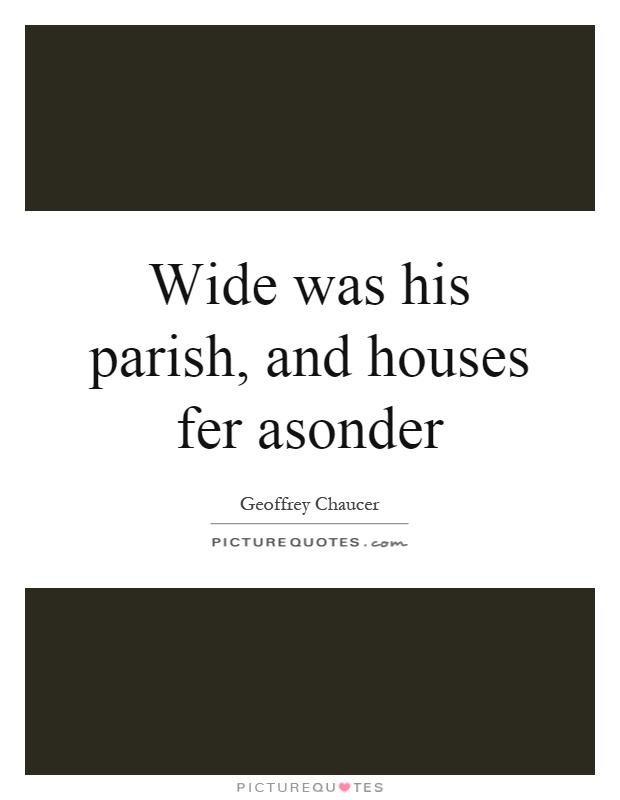Wide was his parish, and houses fer asonder

Wide was his parish, and houses fer asonder
Geoffrey Chaucer, often referred to as the father of English literature, was a prolific poet and author who lived in the 14th century. One of his most famous works is "The Canterbury Tales," a collection of stories told by a group of pilgrims on their way to the shrine of Thomas Becket in Canterbury Cathedral. In this work, Chaucer showcases his keen observational skills and his ability to capture the nuances of human behavior.One of the lines from "The Canterbury Tales" that stands out is "Wide was his parish, and houses fer asonder." This line is from the description of the character the Parson, who is portrayed as a humble and devout clergyman. The phrase "Wide was his parish" suggests that the Parson's responsibilities extend far and wide, encompassing a large area and a diverse population. This indicates that the Parson is dedicated to his calling and takes his duties seriously, despite the challenges that come with such a vast parish.
The phrase "houses fer asonder" further emphasizes the scattered nature of the Parson's parish. The use of the word "asonder" suggests that the houses are spread out and not easily accessible, requiring the Parson to travel long distances to minister to his flock. This highlights the physical and emotional toll that the Parson's job can take, as he must navigate the difficulties of reaching his parishioners and providing them with spiritual guidance.
Chaucer's choice of language in describing the Parson's parish reflects his skill as a writer and his ability to create vivid and evocative images. The phrase "Wide was his parish, and houses fer asonder" not only paints a picture of the Parson's surroundings but also conveys a sense of the challenges and responsibilities that come with his role as a clergyman. Through this description, Chaucer invites readers to consider the complexities of human nature and the ways in which individuals navigate their roles and responsibilities in society.












 Friendship Quotes
Friendship Quotes Love Quotes
Love Quotes Life Quotes
Life Quotes Funny Quotes
Funny Quotes Motivational Quotes
Motivational Quotes Inspirational Quotes
Inspirational Quotes